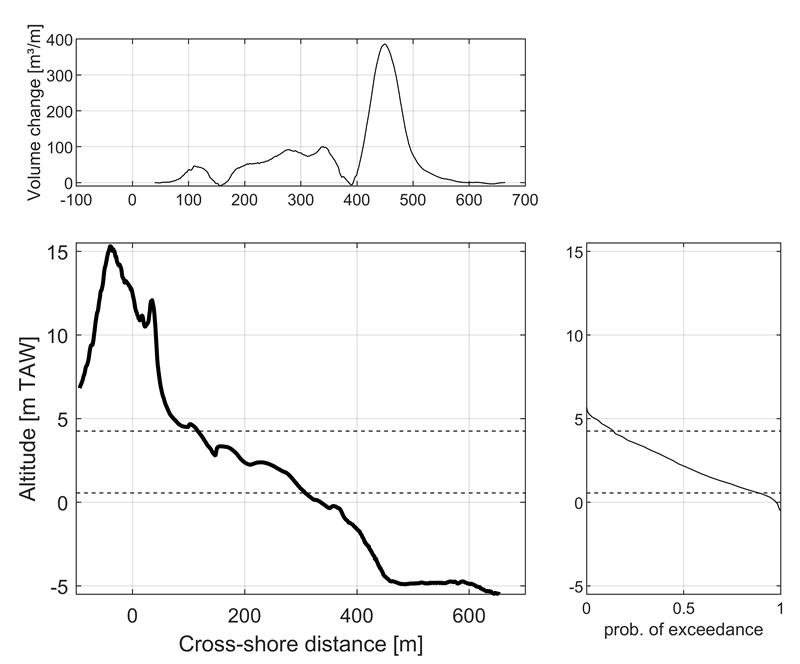Roest1,2*, P. Rauwoens1
1 KU Leuven; 2 TU Delft
*corresponding author:
Introduction
Alongshore sediment transport is one of the key parameters in the design of coastal infrastructure. It determines the life-time of nourishments and the intensity of maintenance dredging.
However, sediment transport in the alongshore direction is not uniformly distributed over the cross-shore profile as demonstrated by e.g. Kamphuis (1991) and Bayram et al. (2001). Wave-driven transport is bound between the run-up limit and the depth of closure. As the alongshore transport is governed by wave energy dissipation, peaks in transport rate are expected over bars and in the swash zone. Furthermore, aeolian transport only takes place on the sub-aerial and sufficiently dry intertidal beach. Especially in macro-tidal environments the boundaries for sediment transport are highly modulated with the tide and wave run-up. The question is how that modulation averages out and where in the beach profile the highest transport rates are found.
Methods
In the harbour of Blankenberge, Belgium, over 100 multi-beam surveys were performed for maintenance dredging operations, covering 2015 to 2021. The harbour access channel functions as a sand trap, due to the smooth low-crested breakwaters, nearly level with the adjacent beach. Between surveys sediment is deposited in the channel. Volumes and patterns can be correlated to the theoretical transport, based on nearshore hydrodynamics. A tide-gauge and meteorological station are present in Blankenberge harbour, a directional wave-buoy is located nearby at 8 m depth.

Figure 1: Deposition in relation to the coastal profile during the February 2020 storm. Upper panel: deposited volume in the channel (m3/m). Lower panel: coastal profile (May 2020) and mean high and low water levels (dashed). Right panel: probability of exceedance of the still water level.
References
Kamphuis, J.W. (1991). Alongshore Sediment Transport Rate. Journal of Waterway, Port, Coastal, and Ocean Engineering, 117, 624-640. https://doi.org/10.1061/(ASCE)0733-950X(1991)117:6(624)
Bayram, A., M. Larson, H.C. Miller and N.C. Kraus, (2001), Cross-shore distribution of longshore sediment transport: comparison between predictive formulas and field measurements. Coastal Engineering, 44(2), 79-99. https://doi.org/10.1016/S0378-3839(01)00023-0.
I. Surname1*, F.N. Another-Surname2 , Y. Next-Surname2
1 University Name, Country; 2 Organization Name, Country
* Corresponding author: mail.name@organization.org


